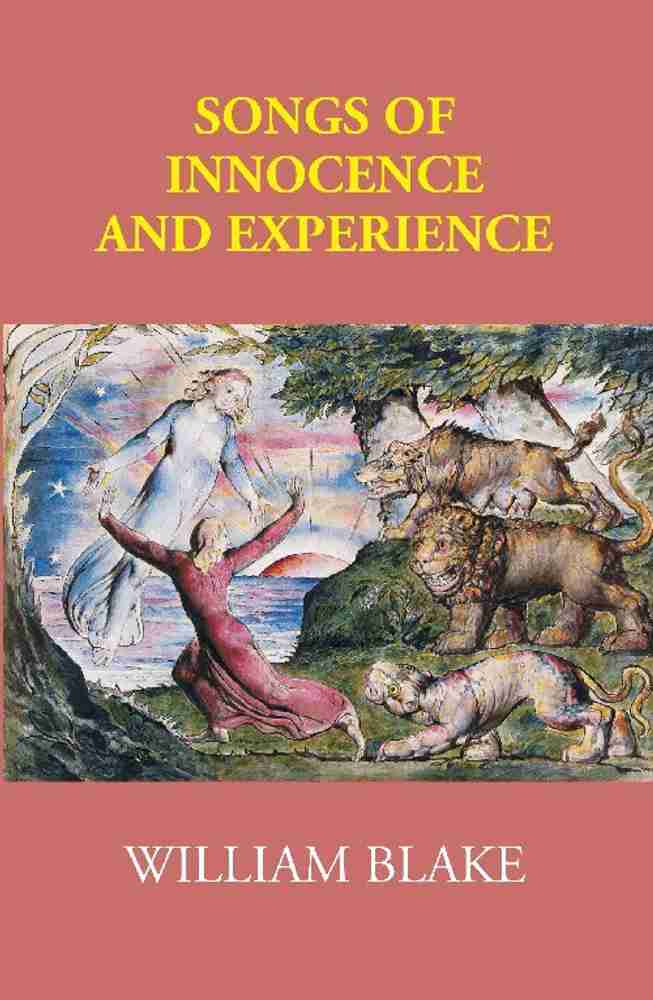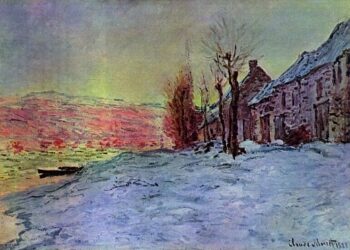Introduction
Full Songs Of Innocence And Of Experience Summary William Blake, an iconic figure of the Romantic era, produced a body of work that delves into the complexities of the human experience, societal norms, and the stark contrasts between innocence and experience. His two collections, Songs of Innocence (1789) and Songs of Experience (1794), serve as companion pieces that explore these themes through poetry and illustration. This article provides a comprehensive summary of the two collections, highlights key themes, and presents a detailed FAQ section to enhance understanding.
Overview of Songs of Innocence and Songs of Experience
Blake’s Songs of Innocence presents a vision of the world through the lens of childhood, purity, and joy. It celebrates the beauty of nature, the innocence of children, and the divine aspects of life. In contrast, Songs of Experience provides a sobering critique of the harsh realities of adult life, exploring themes of oppression, loss, and moral ambiguity. Together, these collections create a profound commentary on the dualities of human existence.
Read More
Summary of Songs of Innocence
Songs of Innocence consists of 19 poems, each capturing the essence of childlike wonder, joy, and spiritual connection. Below is a summary of key poems in this collection:
1. Introduction
The opening poem introduces the speaker, who invites readers into a world of innocence and joy, emphasizing the purity of children and their connection to the divine.
2. The Shepherd
This poem presents a gentle shepherd who cares for his flock. The shepherd symbolizes a protective and nurturing figure, reflecting the theme of divine love and guidance.
3. The Lamb
In this well-known poem, the speaker poses questions about the lamb’s creation, drawing parallels between the lamb and Jesus Christ. The poem emphasizes innocence, purity, and the divine.
4. The Little Black Boy
The speaker, a young black boy, describes his understanding of racial identity and spirituality. The poem conveys themes of love, acceptance, and the idea that true beauty transcends race.

5. The Chimney Sweeper
This poem presents a child chimney sweeper who narrates his experiences of hardship and the loss of innocence. The speaker expresses hope for a better future through dreams of liberation.
6. The Divine Image
Blake explores the themes of compassion, forgiveness, and love as essential human qualities. The poem emphasizes the divine nature of humanity and the interconnectedness of all people.
7. Holy Thursday
The poem depicts a gathering of impoverished children on Holy Thursday, highlighting their innocence and vulnerability. It critiques societal indifference towards the suffering of the poor.
8. The Echoing Green
This poem celebrates the joys of childhood, depicting children playing on the green grass while their parents watch. It embodies the themes of nature, happiness, and the simplicity of life.
9. The Garden of Love
In this poem, the speaker reflects on a once-beautiful garden now overshadowed by religious authority. The poem explores the loss of innocence and the impact of societal constraints on love.
10. Infant Joy
The poem expresses the pure joy of a newborn child, celebrating the essence of innocence and the wonder of new life.
11. A Cradle Song
In this lullaby, a mother reassures her child of her love and protection, emphasizing the nurturing aspect of motherhood and the beauty of innocence.
12. On Another’s Sorrow
The poem conveys empathy and compassion, emphasizing the importance of sharing in the suffering of others. It reflects Blake’s belief in the interconnectedness of humanity.
13. The Fly
Through the perspective of a fly, the poem explores themes of mortality and the fragility of life. The speaker contemplates the nature of existence and the interrelation between living beings.
14. The Nurse’s Song
This poem depicts a nurse comforting children as they play, emphasizing themes of safety, nurturing, and the joy of childhood.
15. The Chimney Sweeper (Innocence)
The innocent version of the chimney sweeper captures a child’s perspective on suffering and hope, contrasting the harsh realities faced by child laborers.
16. Spring
In this poem, Blake celebrates the arrival of spring, symbolizing rebirth, renewal, and the cyclical nature of life.
17. The Blossom
The speaker reflects on the beauty of nature and the innocence of childhood through the metaphor of a blossom, symbolizing purity and growth.
18. The Tyger
This poem contrasts the beauty of a tiger with the concept of divine creation. It explores the coexistence of beauty and terror in nature.
19. The Little Boy Lost and The Little Boy Found
These two poems tell the story of a lost child and his eventual reunion with his father, emphasizing themes of guidance, protection, and the bond between parent and child.
Summary of Songs of Experience
Songs of Experience serves as a counterpoint to Songs of Innocence, depicting the harsh realities of adult life and the loss of innocence. Below is a summary of key poems in this collection:
1. Introduction
The introduction presents a more cynical view of life, emphasizing the loss of innocence and the pervasive darkness in the world.
Read More
2. The Clod and the Pebble
This poem contrasts the perspectives of a clod of clay and a pebble, symbolizing innocence and experience. The clod represents love and joy, while the pebble embodies cynicism and bitterness.
3. The Chimney Sweeper (Experience)
In this version, the chimney sweeper reflects a more disillusioned perspective, highlighting the exploitation and moral hypocrisy of society.
4. The Sick Rose
This poem uses the metaphor of a rose to symbolize beauty corrupted by disease. It explores themes of love, betrayal, and the fragility of innocence.
5. The Tyger
In the Songs of Experience version, the tiger symbolizes the terrifying aspects of creation and the duality of existence. The poem questions the nature of God and the existence of evil.
6. London
This poem presents a stark portrayal of life in urban London, emphasizing themes of oppression, despair, and the loss of individuality in a mechanized society.
7. The Human Abstract
Blake critiques the societal constructs that shape human behavior, emphasizing the importance of compassion and love in overcoming the darkness of experience.
8. A Poison Tree
In this poem, Blake explores the destructive nature of repressed anger and the consequences of harboring resentment. The imagery of a poisoned tree serves as a metaphor for the toxic effects of unexpressed emotions.
9. The Garden of Love
The speaker reflects on the oppressive nature of organized religion and the loss of love and joy, contrasting the ideals of innocence with the harsh realities of experience.
10. Holy Thursday (Experience)
This version of Holy Thursday critiques the societal indifference toward the suffering of children, presenting a more somber and realistic portrayal of poverty.
11. The Chimney Sweeper (Experience)
The experience version of this poem emphasizes the bitterness and disillusionment of the chimney sweeper, contrasting the hopefulness found in the Songs of Innocence version.
12. The Angel
The poem reflects on the nature of angels and the idea of divine protection. It critiques the idealization of angels, presenting a more complex view of spirituality.
13. The Voice of the Ancient Bard
This poem serves as a call to awaken the human spirit and challenge societal norms. It emphasizes the importance of artistic expression and individual freedom.
14. The Fly (Experience)
In this version, the fly serves as a reminder of mortality and the fragility of life, emphasizing the darker aspects of existence.
15. The Nurse’s Song (Experience)
This version of the nurse’s song reflects the loss of innocence and the harsh realities of life, contrasting the joy and safety found in childhood.
16. The Little Boy Lost and The Little Boy Found (Experience)
These poems depict the lost child’s journey through the darkness of experience, emphasizing themes of guidance and the quest for safety.
17. The Echoing Green (Experience)
The experience version reflects on the fading of childhood joy and the inevitable passage of time, emphasizing the loss of innocence.
18. On Another’s Sorrow
The poem explores the importance of empathy and compassion, emphasizing the interconnectedness of human experience.
19. Infant Sorrow
This poem contrasts with Infant Joy from Songs of Innocence, depicting the struggles and pain of a newborn, symbolizing the harsh realities of life.
Key Themes in Songs of Innocence and of Experience
1. Innocence vs. Experience
The central theme of both collections is the contrast between innocence and experience. Songs of Innocence celebrates the purity and joy of childhood, while Songs of Experience reveals the darker realities of adult life. This duality reflects Blake’s belief in the complexity of the human experience and the inevitable loss of innocence as one matures.
Read More
2. Child Labor and Exploitation
Blake’s poems highlight the exploitation of children during the Industrial Revolution. The Chimney Sweeper poems serve as powerful critiques of societal indifference towards child labor and the moral failures of a system that permits such exploitation.
3. Religion and Hypocrisy
Blake examines the role of organized religion in both collections, highlighting its capacity for both comfort and oppression. The Songs of Innocence version often presents a hopeful view of spirituality, while the Songs of Experience version critiques the hypocrisy of religious institutions that fail to protect the vulnerable.

4. The Nature of God and Creation
Through poems like “The Tyger,” Blake explores the complexities of divine creation. He questions the nature of God and the existence of evil, presenting a nuanced view of spirituality that acknowledges both beauty and terror in the world.
5. The Loss of Childhood
Both collections reflect on the loss of childhood innocence and the impact of societal expectations on individuals. Blake emphasizes the importance of nurturing and protecting children, contrasting the joys of childhood with the harsh realities of adult life.
6. Love and Compassion
Themes of love, compassion, and empathy are central to Blake’s work. He advocates for a more compassionate society that recognizes the interconnectedness of humanity and the importance of caring for one another.
7. Nature and the Human Condition
Blake’s poetry often reflects a deep connection to nature, using natural imagery to symbolize innocence and the cycle of life. He explores the relationship between humanity and the natural world, emphasizing the importance of preserving innocence in a rapidly changing society.
8. The Role of the Artist
Blake positions the artist as a crucial figure in society, capable of challenging societal norms and awakening the human spirit. His poems serve as a call to artistic expression and individual freedom.
Blake’s Philosophical Context
William Blake’s work is situated within the philosophical and artistic currents of the late 18th century, particularly the Romantic movement. This period emphasized emotion, individual experience, and a connection to nature, in contrast to the rationalism of the Enlightenment.
Blake’s exploration of innocence and experience reflects his belief in the importance of imagination and creativity. He was critical of the societal structures that emerged during the Industrial Revolution, including organized religion and capitalism, which he believed contributed to the suffering of individuals.
His works challenge readers to confront societal injustices and recognize the inherent worth and dignity of every individual. Blake’s unique blend of spirituality, social critique, and artistic expression continues to resonate with readers today.
Conclusion
Songs of Innocence and Songs of Experience are foundational texts in English literature that explore the dualities of human existence. Through their contrasting themes and rich imagery, these collections offer profound insights into the complexities of innocence, experience, and the human condition. William Blake’s ability to evoke deep emotions and challenge societal norms ensures that his work remains relevant and thought-provoking. As readers engage with these poems, they are invited to reflect on the enduring themes of love, compassion, and the quest for understanding in a world marked by both beauty and suffering.
FAQ
1. What is the main theme of Songs of Innocence and of Experience?
The main theme is the contrast between innocence and experience, exploring the complexities of the human experience and the loss of childhood innocence.
2. How does Blake portray child labor in his poetry?
Blake vividly depicts the harsh realities of child labor, particularly in poems like “The Chimney Sweeper.” He highlights the exploitation and suffering of children during the Industrial Revolution.
3. What role does religion play in Blake’s work?
Religion serves as a dual symbol in Blake’s poetry. In Songs of Innocence, it often reflects hope and divine love, while in Songs of Experience, it critiques the hypocrisy and moral failures of organized religion.
4. How does the poem “The Tyger” reflect Blake’s views on creation?
“The Tyger” questions the nature of God and the existence of evil, presenting a complex view of divine creation that acknowledges both beauty and terror.
5. What is the significance of nature in Blake’s poetry?
Nature symbolizes innocence and the cycle of life. Blake’s connection to the natural world emphasizes the importance of preserving innocence amidst societal changes.
6. How does Blake address the loss of childhood?
Blake emphasizes the importance of nurturing and protecting children, contrasting the joys of childhood in Songs of Innocence with the harsh realities faced by adults in Songs of Experience.
7. What can readers learn from Blake’s exploration of love and compassion?
Blake advocates for empathy and interconnectedness, urging readers to recognize the importance of caring for one another and addressing societal injustices.
8. How does Blake position the artist in society?
Blake views the artist as a vital figure capable of challenging societal norms and awakening the human spirit, emphasizing the role of artistic expression in promoting individual freedom.
Read More




